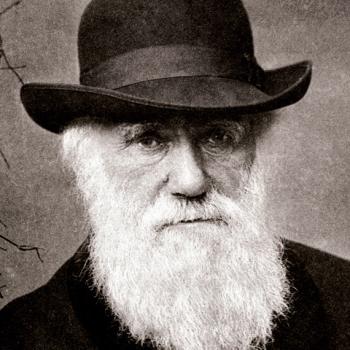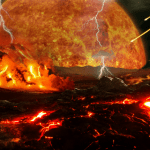
Living matter, unlike non-living matter, assimilates and processes energy, stores and manages information, and replicates or reproduces itself. In this regard, whales and roses and snakes and hawks and redwoods are dramatically different from the inanimate nature around them. Carrying out these common biological functions requires a basic minimum level—indeed, really, a remarkably high degree—of complexity.
“Molecular biology,” writes Michael Denton,
has shown that even the simplest of all living systems on earth today, bacterial cells, are exceedingly complex objects. Although the tiniest bacterial cells are incredibly small, weighing less than 10-12 gms, each is in effect a veritable micro-miniaturized factory containing thousands of exquisitely designed pieces of intricate molecular machinery, made up altogether of one hundred thousand million atoms, far more complicated than any machine built by man and absolutely without parallel in the non-living world. [1]
Denton speaks of a “recently revealed world of molecular machinery, of coding systems, of informational molecules, of catalytic devices and feedback control.”[2]
Harvard palaeontologist George Gaylord Simpson:
A fully living system must be capable of energy conversion in such a way as to accumulate negentropy, that is, it must produce a less probable, less random organization of matter and must cause the increase of available energy in the local system rather than the decrease demanded in closed systems by the second law of thermodynamics. It must also be capable of storing and replicating information, and the replicated information must eventually enter into the development of a new individual system like that from which it came. The living system must further be enclosed in such a way as to prevent dispersal of the interacting molecular structures and to permit negentropy accumulation. At the same time selective transfer of materials and energy in both directions between organism and environment must be possible. Systems evolving toward life must become cellular individuals bounded by membranes.[3]
For my purposes, I intend to adopt as the definition of the term life one that highlights the extraordinarily sophisticated nature of the information that’s contained in the genetic code, the genome, of living forms of matter. The crucial distinction between living matter and non-living matter, on this view — I almost said “the vital distinction” — is the richness of the “information content” that’s peculiarly characteristic of life forms, in contrast to the relative poverty of information that characterizes inanimate objects. This information richness allows living organisms to interact with their environment in complex ways that go far beyond those available to, say, rocks and dirt clods.
[1] Michael Denton, Evolution: A Theory in Crisis (Bethesda, MD: Adler and Adler, 1985), 250.
[2] Denton, Evolution, 271.
[3] George Gaylord Simpson, “The Nonprevalence of Humanoids,” Science 143 (1964): 771.
(Preliminary notes drawn from the cited pages of Denton’s Evolution: A Theory in Crisis and from Dean Overman’s A Case against Accident and Self-Organization, pp. 23, 32-24)












